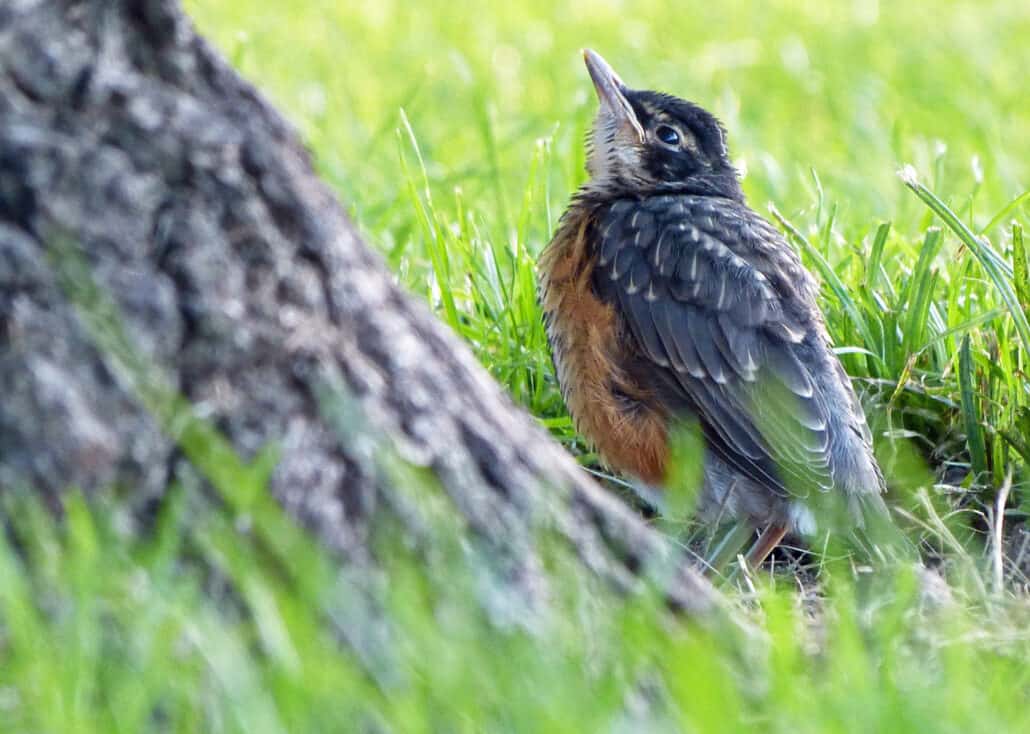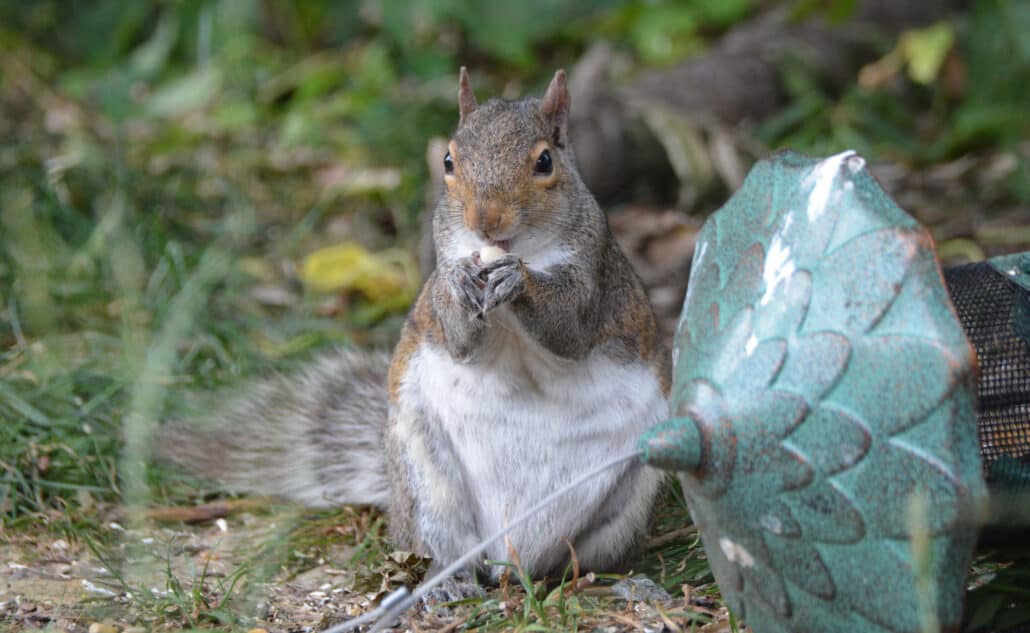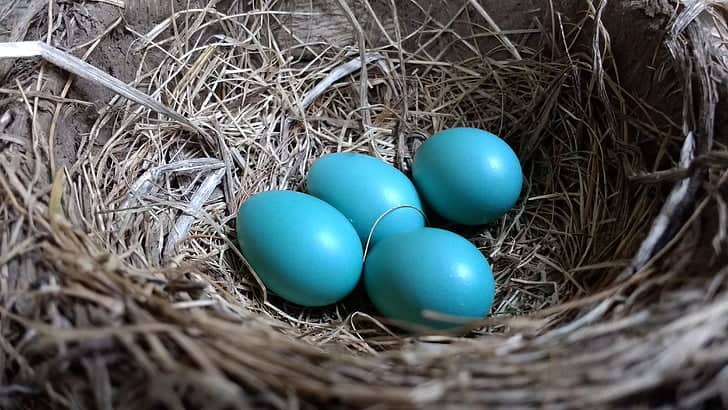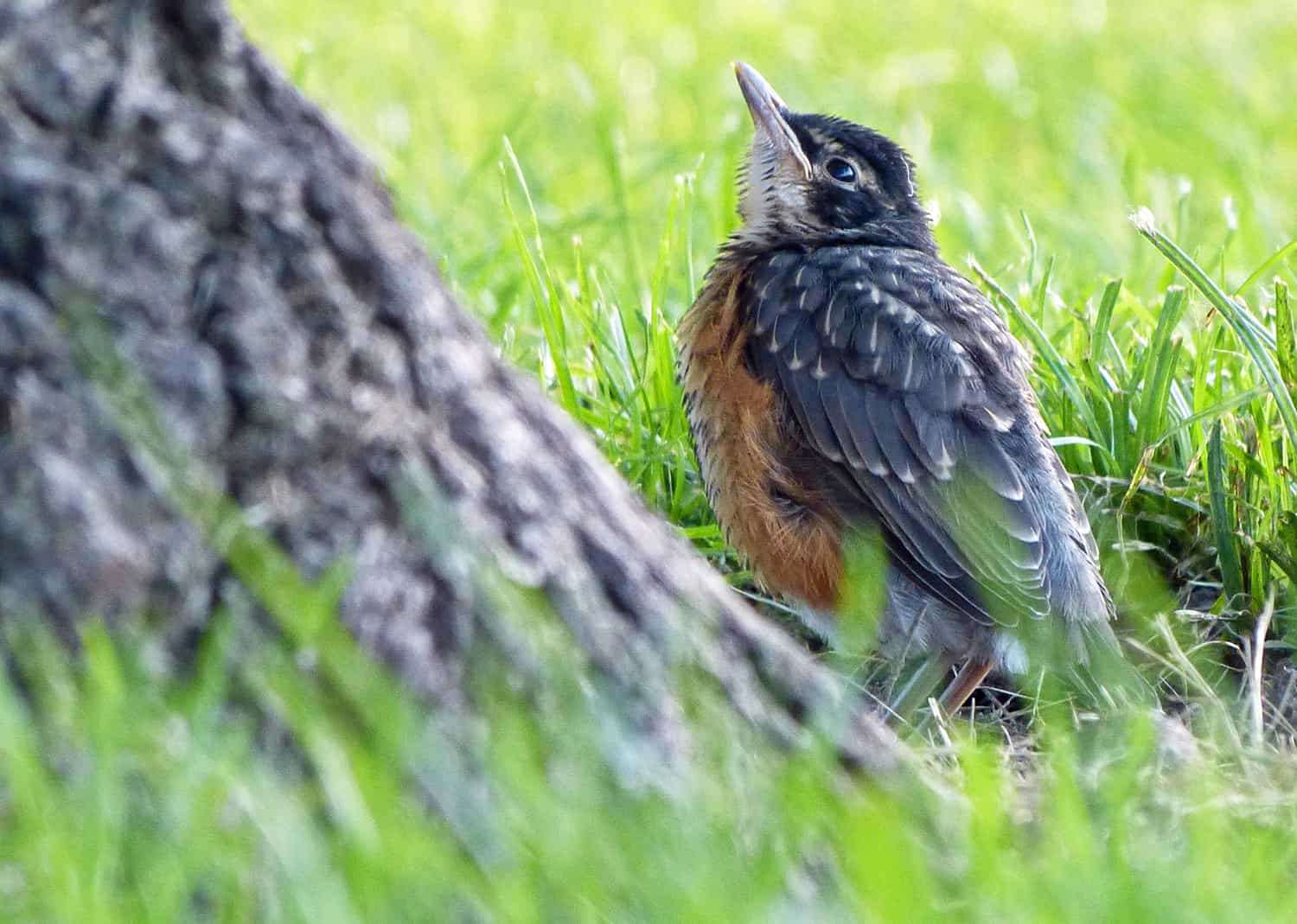
I am thrilled and humbled whenever I am able to provide some insight to concerned neighbors who want to do right by wildlife. It doesn’t hurt to consult with those who are much more knowledgeable than I about these matters—and I nearly always do when called upon for advice.
“There’s a young bird that landed on my front stoop. I saw the mother robin feed it once but I’m concerned—cats in the neighborhood, etc. I’m staying away from it as that’s what someone else advised. Just checking in with you for your expertise?”
“So there’s a baby robin sitting next to the curb here. Should I take it home and feed it?”
These questions were posed by two separate neighbors via two separate texts recently—regarding the same bird! The texts were accompanied by photos, showing a “tween” robin: stubby tail; mostly feathered, with tiny tufts of down showing on the belly. In short, adorable, but, based on the information my neighbor provided, still dependent upon its parents.
In this instance, I didn’t consult anyone, and my response to each neighbor was the same:

“Its best chance for survival is to let it be cared for by its parents—especially because the mother is feeding it. Unfortunately keeping it safe from outdoor cats is challenging when people allow their cats to roam freely.”
While the second part of my response is a topic sometimes fraught with controversy, it’s indisputable that cats kill birds, and baby birds are especially vulnerable. What’s also indisputable is that adult birds are the best custodians of fledglings. They will nurture their young.
That can lead one to wonder: What, exactly, is a fledgling? Distinguishing between a fledgling and a nestling is critical when considering whether a young bird will benefit from human intervention. A fledgling is mostly feathered; able to grip a twig (aka perch); and capable of hopping on the ground; whereas a nestling is unable to fly and must remain in the nest for its safety. In the case of robins, once fledged, for about the next three weeks, they will wander within 500 feet of the nest site, often on the ground or along fence lines. During this time, their parents will care for them.
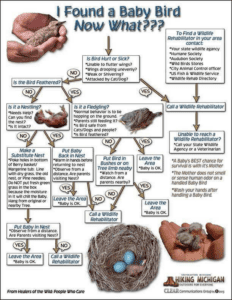
Although it’s natural for us to view a bird hopping about on the ground as, well, unnatural, in reality it’s an important developmental step as the bird learns to fly. The Avian Conservation Center of Appalachia (of which Bird Watcher’s Digest contributor Katie Fallon is a founder and board member) recently posted about this very subject on its Facebook page. In part: “Many young birds leave the nest before they can fly well. Unless they’re in immediate danger from cats, dogs, humans, etc., they should be left alone. The parents continue to feed and care for them at this stage. If a young bird IS in danger, it’s usually okay to pick it up and put in on a low branch or in a nearby bush. Parent birds will NOT abandon a baby because it’s been touched by humans.”
If you are certain that a fledgling’s parents are dead, or if you see an animal attack the fledgling, that is the time to locate a licensed rehabilitator and intervene swiftly. For more information, see this resource page. And please share these resources with others. Baby birds and their parents will be grateful!

